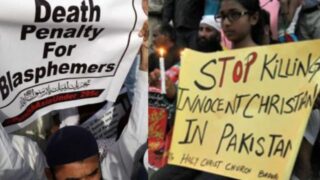The incidents are just too numerous to explain all of them away with mental health issues of the perpetrators
by PierLuigi Zoccatelli


Attacks against Christian churches continue in different states of the U.S., and are now becoming somewhat endemic, as a look at some recent incidents demonstrate.
On December 28, 2021, somebody fired shots from outside into the interior of Everlasting Life Holiness Church in Prichard, Alabama, killing a 65-year-old woman who was inside the church.
In Hillsborough, New Jersey, the police reported on January 2 that the Catholic church of Mary Mother of God had been attacked three times in the past month of December.
On January 4, 2022, a man who had entered a church in downtown Buffalo, New York, and started shouting at the pastor and threatening to kill those in attendance was arraigned on one count of making a terrorist threat.
Also on January 4, a man was arrested, accusing of having set fire to a nativity scene located in front of Hopeland Church, an evangelical church in Vandalia, Ohio. It remains unclear whether the same person was also responsible for another attack to the church’s parsonage, where property was destroyed on January 2. The man was indicted on January 14.
And again on January 4, unidentified perpetrators vandalized the historical Flowertown Baptist Church in Summerville, South Carolina, that they had entered by breaking several windows with a fire extinguisher.
On January 9, St. Phillips Moravian Church in Winston-Salem, North Carolina, was evacuated after a bomb threat. The same happened the same day at Burns United Methodist Church in Des Moines, Iowa. Police is investigating the incident as a hate crime.


On January 13, a woman who had vandalized the Catholic Cathedral Basilica of the Immaculate Conception in Denver, Colorado, was arrested on hate crime charges. She had sprayed graffiti with anti-Christian messages on the external walls of the cathedral and on statues outside it.
Aso on January 13, a man appeared before a court in Smithville, Tennessee, after he spray-painted a local church, and left a threatening message, stating “[It would] be a real shame to lose your church because of terrorists.”
On January 16, police arrested a man who had entered St. Timothy Catholic Church in San Antonio, Texas, armed with a gun and tried to interrupt the Mass, together with another man who was waiting for him in a van outside the church.
As Bitter Winter commented in previous cases of “epidemics” of attacks against Christian churches in Europe and North America, it is well possible that some of the incidents can be ascribed to the mental health problems of the perpetrators. However, they are too numerous to be explained only through mental health issues, and a larger climate of hostility to Christianity prevailing in segments of North American culture justifies the police officers and the courts that treat these as hate crimes.









